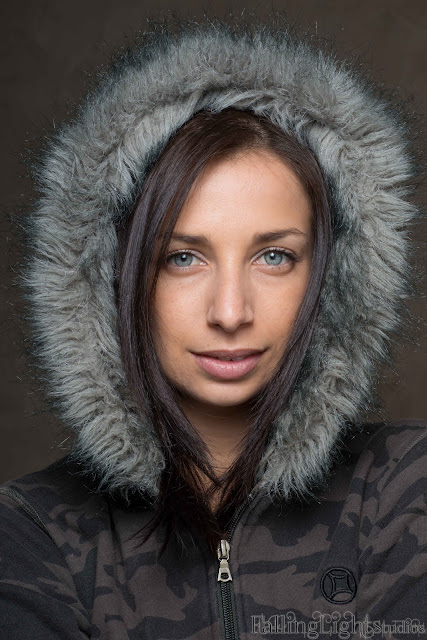This task involved using an on camera speedlight to light a subject indoors.
The speedlight was used in the following ways:
Directly pointed at the subject - This method produced a pretty flat even light with some harsh shadows. The result was pretty unpleasing to the eye.
 |
| Direct Flash |
Bounced off the ceiling - This method produced one of the more appealing portraits from the set of 5. The flash light combined with the ambient light created nice definitions on the subjects face with subtle shadows. The direct bounce did cause a little more exposure on the subjects forehead area but it wasn't too bad.
 |
| Flash Off Ceiling |
Bounced off a coloured wall - This method produced a pretty nasty colour cast over the entire subject. Not recommended.
 |
| Flash Off Coloured Wall |
Bounced off a white wall - Similarish results to the ceiling method, although the shadows on the face on the opposite side to the flash bounce had some pretty horrible shadows in the eye socket and cheek area. We were still very close to the red wall in this shot and you can still see some colour cast as a result.
 |
| Flash Off White Wall |
Adjusted to give what I think is a nice exposure - For this shot I angled the flash upwards and backwards to to the left to bounce off a spot where the wall and ceiling were meeting. There was ambient light coming in through a set of doors to the subjects left and I wanted to try and add some soft fill light to the subject. The result borders on being quite flat but I don't mind it.
 |
| Flash Adjusted To Give Nice Exposure |







































